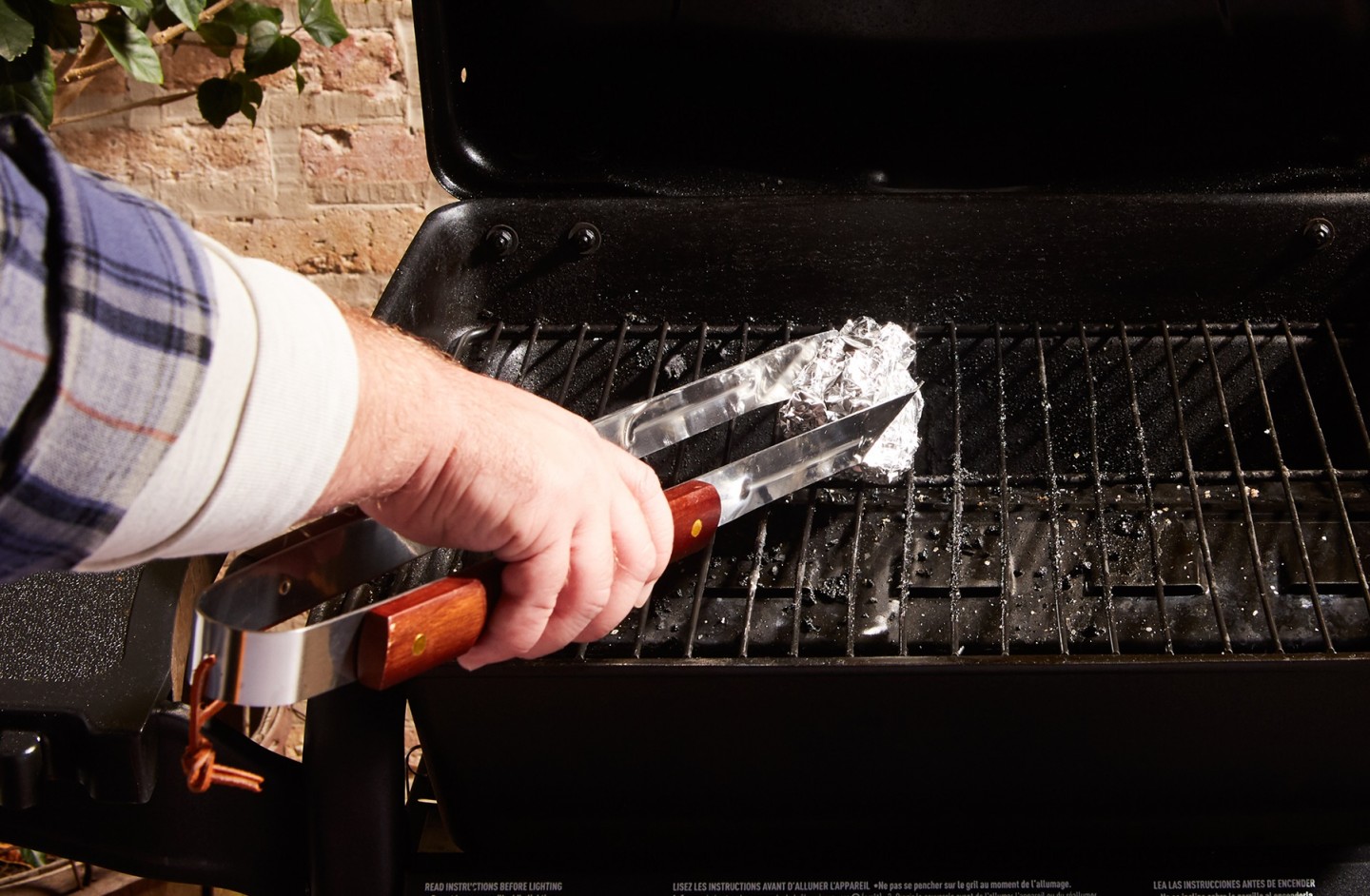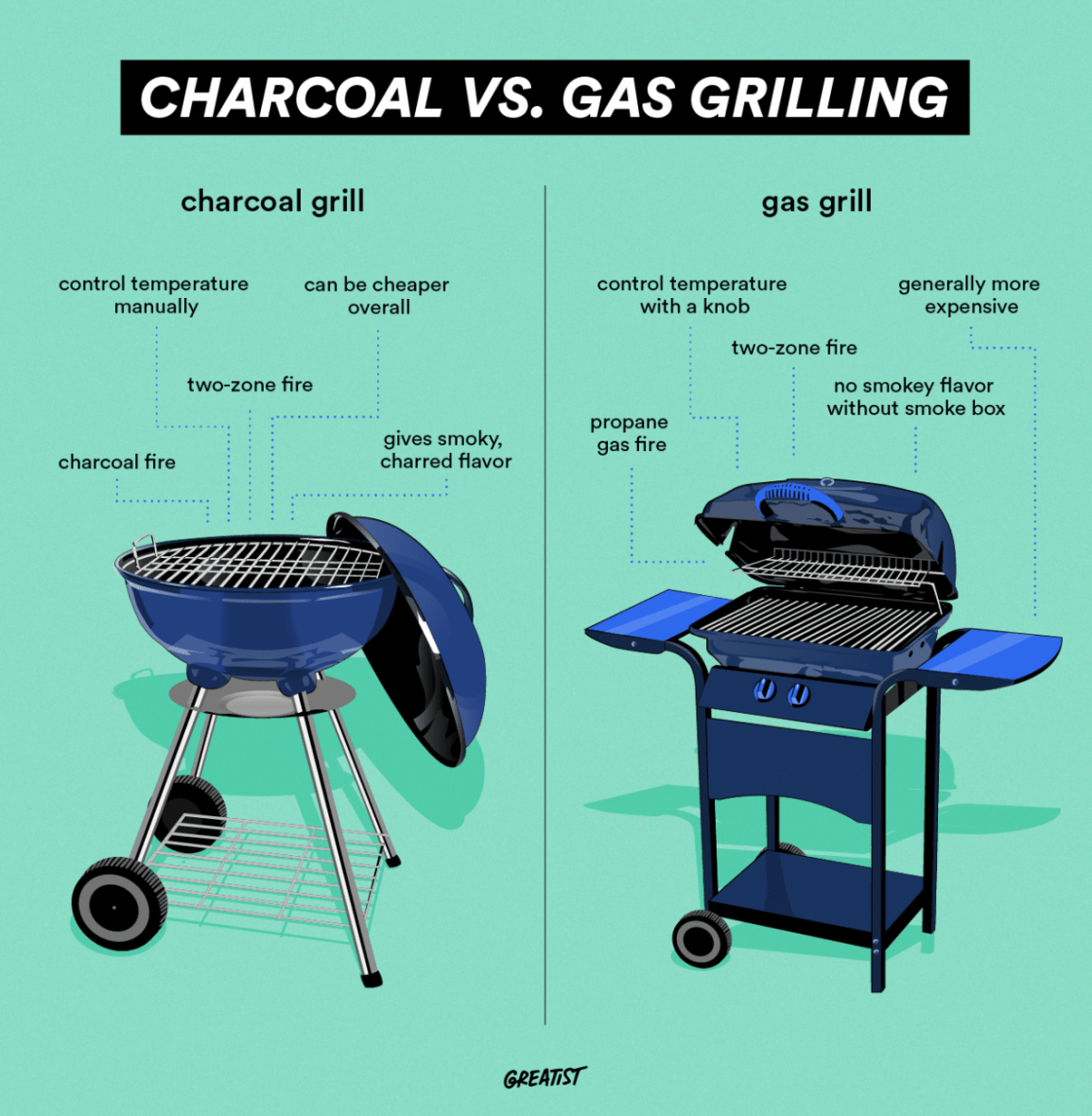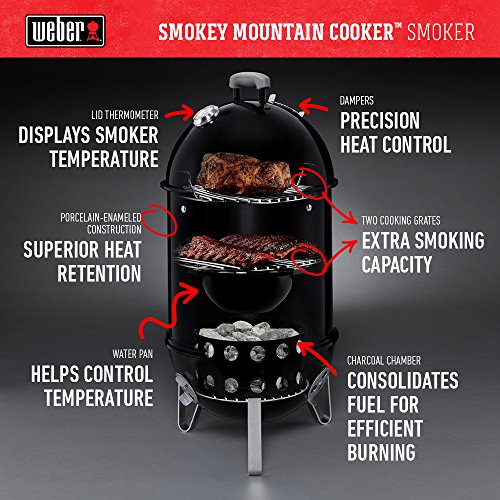
Cook food on the coals to get maximum heat. You will get more heat from a charcoal grill that has wide vents. You have enough oxygen flowing through if your flames are bright. If the flames are too low, it means that there is not enough oxygen. Close the vents if your food is cooking too quickly. The higher the flames, higher the heat. If the flames appear too low, it is because you are using too much charcoal.
Ventilation
A charcoal grill will have an intake vent. The purpose of this device is to supply oxygen to the combustibles. This is the source of "fuel" for the grill. The vents are more open, which means more oxygen can get into the grill, and thus raise the temperature. A key part of controlling the temperature is controlling the oxygen level.
The main method of controlling the temperature is to use the charcoal grill’s intake vent. Near the vent, look for two arrows. If the arrows point to half-open, the vent is open. The top lid contains both the oxygen and exhaust dampers. By opening and closing them, you can control the temperature and intensity of the fire. Also, the larger the vent, the hotter the fire will get.
The vents on the charcoal grill should be opened as much as possible. If the vents are left open, charcoal will burn faster and be hotter. The grill's internal temperature can be reduced and smoke production decreased by closing the vents. The bottom vent should be opened, and the top one should be closed. If you see too much smoke when cooking, only open the bottom one. But if it doesn't, you can always close it halfway or completely.
Another component to look at is the outtake valve. The outtake vent, which pulls oxygen from the air, is not like the intake vent. Charcoal/wood fires produce gases, and if not vented properly, they will smother the fire. It is best to adjust your intake vent before you begin cooking in order to get the right temperature. Beginners should start at the intake and then work their way up.
Exhaust vent
The exhaust vent of a charcoal grill regulates the amount air allowed to enter the cooking area. You will have a more intense fire if the vent is fully or partially open. The vent should be closed to allow more oxygen to reach the cooking area. This will make the flames smaller and less intense. You must consider many factors when controlling your exhaust vent.
A charcoal grill's exhaust vent is designed to balance the oxygen in the bottom chamber with the amount of oxygen that is in the top chamber. It is essential to control these fuels in order to cook the perfect burger. Charcoal grill exhaust ventilations, also known as dampers, do not let heat out, but are a way to control temperature. The vent's proper use can enhance the flavor of your food, and help to keep it tender and juicy.
The exhaust vent is the most important part of a charcoal grill. To get the best heat out of the charcoal, cook it directly on the coals. If you prefer to control the temperature of your food, however, the 2-zone method is a good option. The two-zone method lets you move the food around by cooking in sections. To help regulate the flame, you can open the top vent if the food is too hot.
An intake damper is the second part of an exhaust vent for charcoal grills. This vent is found at the bottom. To burn wood and charcoal, oxygen is required. The vent can be opened to decrease the oxygen requirement. The intake damper can be found on the bottom or side of the grill. The fire can heat up if the vent is open. It heats the fire and makes it more efficient, allowing you to cook more food while not having to open the lid.
Take-down damper

Charcoal grills work by allowing air into the grill through an intake vent. The grill will heat up, allowing oxygen to enter. An properly functioning charcoal grill intake diaphragm opens the grill's airways. Keeping the intake damper open allows more oxygen into the grill, while a closed vent restricts oxygen in the system. Too much oxygen can cause coals not to cook properly and heat up. In contrast, a closed damper will cause the coals to die.
Vents or dampers are often called intake or exhaust vents. But they are exactly the same thing. An intake damper can be found in the lower part of a charcoal grill while an exhaust vent is on its top. An exhaust vent and an intake damper are placed on the charcoal grill to draw in oxygen. The vents should be open so that you can cook your food to the desired temperature. If the charcoal grill gets too hot, it will produce more smoking than it can handle.
The temperature can be controlled by adjusting the charcoal grill intake damper. The more open the vent, the more oxygen can enter, and the less air, the cooler the grill will be. The lid of most charcoal grills has one damper and the bowl the other. The temperature of the charcoal grill's overall temperature is controlled by the damper. To get the best smoke flavor, keep the damper open. The charcoal grill intake damper can take anywhere from 10-20 min to settle.
A charcoal grill intake damper helps keep the fire from spreading out of control. Without a lid, the charcoal is in a volatile state and will burn until it is reduced to ashes. You can easily put out a charcoal-grill by closing the vents. This prevents drafts, regulates temperature, and smothers the fire. This is also known as a "fire triangle" and is a system for controlling the temperature of the grill.
Clean the grill grates when they are still warm
It is much easier to clean grates on a grill while they are warm than to use chemicals or other metal tools. The first step in cleaning your grill grates is to soak them in a solution of two cups of vinegar and one cup of baking soda. Allow the mixture to sit for about an hour and then scrub the grates thoroughly with a steel wool or a scouring pad. This method is safer than chemical solutions and works better.
You should clean the grill grates after every cooking session. Scrape any food that has brown on the grill grates using a quality stainless steel brush. To remove any food that has been burned, you can either use a separate scraper OR the built in scraper. Remove any bristles that become loose from the brush. After cleaning the grates you can rinse them well and dry them.
Cast-iron grates can be cleaned with soap and warm water. If the grates have a heavy buildup of grease, it could cause them to lose their non-stick properties. If you want them to look new, it is essential to thoroughly clean them. This is also true for porcelain grill grates. They should be washed with soap and water. Instead of using a cleaner, you can use vegetable oils to prevent rust.
Aluminum foil can be used to scrub grill grates. The aluminum foil can be rolled into a circular shape that you can use with tongs. With a brush, remove any food particles stuck to the grill grates. After removing food from the grill, allow it to cool down completely before wiping it clean. In this way, you can ensure that it is completely clean. A charcoal grill can be left on after cooking for a few seconds.
Check the vents

The charcoal grill's ventilations regulate the temperature and amount of oxygen that is emitted from the charcoal. You will learn how to use the vents correctly and master charcoal grilling. You'll be able to control the temperature and flavor of your food more efficiently. To prevent a fire, make sure to close all the ventilations once you're finished cooking. Also, let the grill cool down before storing.
It's common for a charcoal grill's lid to rust shut if heavy rain has recently fallen on the area. This can stop the grill's ventilation from being opened and allow for oxygen to get in. This can lead to semi-cooked meals or semi-burnt carbon. Vents on a charcoal grill are vital to its proper functioning. Make sure to inspect them often so that they don't become clogged and you have a more enjoyable cooking experience.
A vent is responsible for controlling the oxygen levels in the grill. If you are cooking in winter when oxygen is less, the bottom vent will be more important. The food will cook much faster. Temperature regulation is the purpose of a vent. If the vent is not functioning, an aluminum pan with similar effects can be used. You can still cook more food with it, even though the temperature won't change as much as water.
The exhaust damper is also known as the top vent. Properly using the damper for charcoal grilling is vital. You will get too much smoke if the damper is too close. It is essential to have the right settings in order to get the smoke you desire. You should adjust the vent damper to suit the food you are cooking. The type of charcoal grill used should also be taken into account.
FAQ
How can I get hired for my job as a cook
A word of mouth referral can lead to a job as cook. People in your circle of friends might know about restaurants that need additional staff. You might also find openings advertised on websites or bulletin boards by restaurants.
Which method is best to learn how to cook?
Cooking should be something everyone can do. You will miss out on great meals if you don't learn how to cook. You must start by finding a recipe you enjoy and following it closely when you learn to cook. You'll then want to practice small adjustments until you feel confident making the dish. The last step is to cook for others. You will learn a lot and be able to show off your cooking skills.
How do you become a chef?
There are many avenues to become a professional chef. Start by enrolling in a class at a vocational school or community college. Next, consider attending culinary school. You can also apply for a paid internship.
How Do I Learn About Cooking?
There are many cooking classes available all over the country. Many schools offer classes in baking, pastry, wine tasting, and more. A local community college, vocational school, or private institution can offer classes in cooking.
What is the cost to study culinary arts?
There are many factors that influence the cost of learning culinary arts. For example, a four-year degree typically costs around $40,000. A two-year associate degree, on the other hand may cost less than $5,000. Tuition costs vary depending on which program you choose. Public institutions are more expensive than private institutions.
Which is the best method to store leftovers?
Tupperware containers work well for leftovers. These containers preserve food freshness and stop odors from developing. They also keep foods warm for longer. Leftover food can be frozen in freezer bags. You can freeze leftover food by placing it in another freezer bag. This will prevent any air from escaping. After the food is frozen, place it in a sealed container like a ziplock bag.
Do I have to buy ingredients in order to cook?
You don't need to buy every ingredient. You can buy premade sauces or other items at most grocery stores. However, if you want to save money, then buying pre-made meals can be helpful.
Statistics
- On average, chefs earn $58,740 a year, according to the BLS. - learnhowtobecome.org
- The median pay for a chef or head cook is $53,380 per year or $25.66/hour, according to the U.S. Bureau of Labor Statistics (BLS). (learnhowtobecome.org)
- You'll be amazed that over 90% of CIA students receive scholarships and grants to finish their culinary studies. (ischoolconnect.com)
External Links
How To
How to cook steak
The thickness of any meat will dictate the cooking method. Thicker steaks, for example, are better cooked at low heat while thicker steaks require higher temperatures.
You should also ensure you don't overcook them because they'll lose flavor. You should always remove the steak from the skillet when it's done. This will prevent you from burning yourself.
Cooking times will vary depending on how large the steak is and what degree of doneness you desire. Here are some general guidelines.
Medium Rare: Cook until medium-rare, which is when the internal temperature reaches at least 145degF (63degC). This should take between 3 and 5 min per side.
Medium: Cook until medium. This means that the internal temp has reached 160 degrees F (71 degrees Celsius). This takes approximately 6 minutes per side.
Good Cooking: Cook the meat until it is done. This means that the internal temperature reaches 180F (82C). This typically takes 8-12 minutes per side.